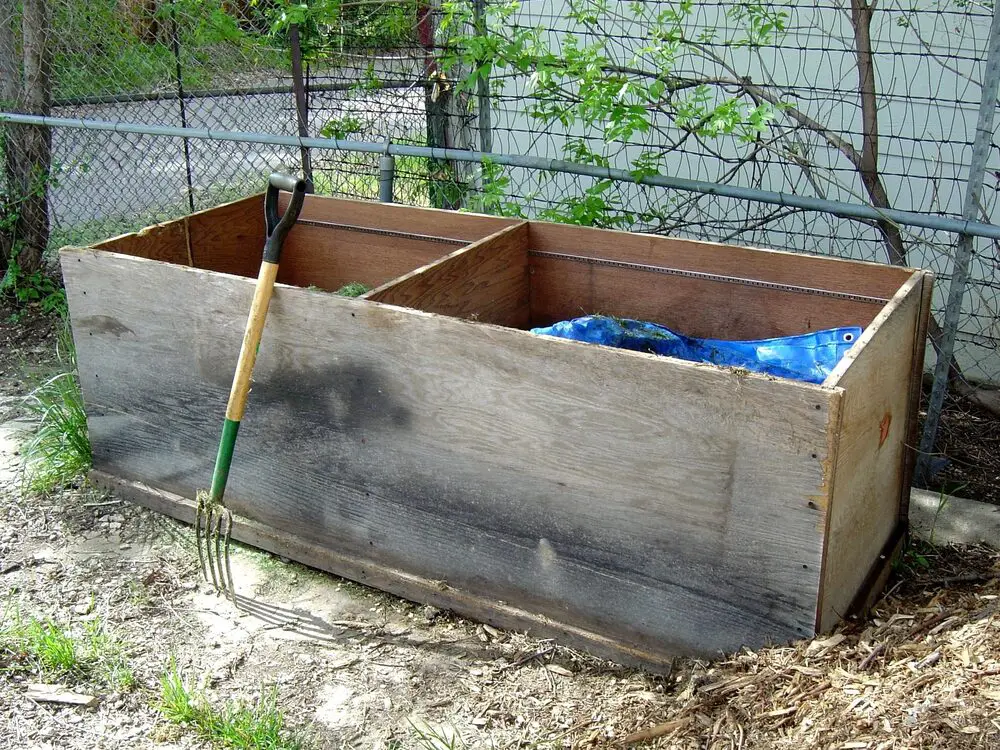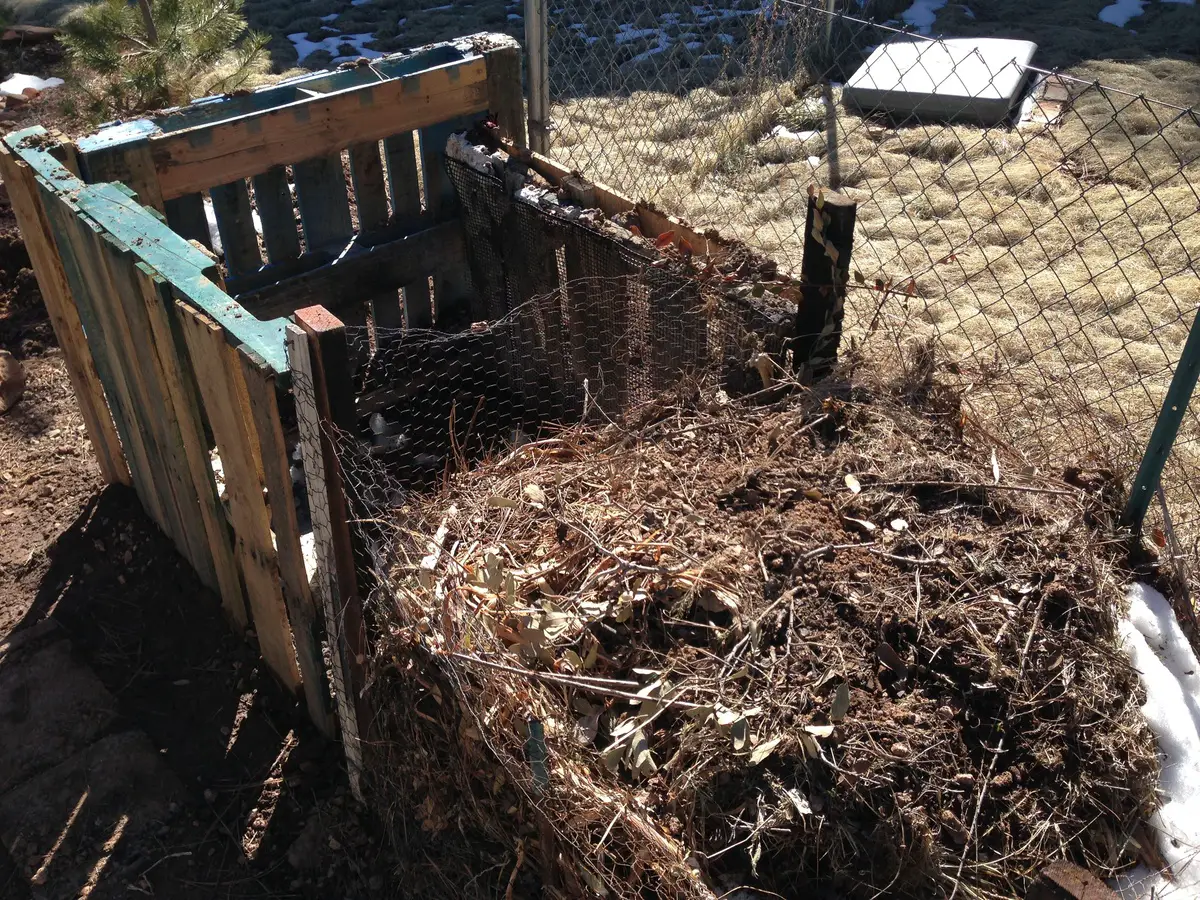You should turn a compost tumbler or bin every 2 to 3 days for the first two weeks. Turn less as the compost matures. When it comes to a medium-sized composed heap, most gardeners turn their compost once every 4-5 weeks. You will get faster results if you commit to turning your heap more often.
Frequent turning speeds up the composting process. Turning your compost also reduces the pungent smell that comes from anaerobic decomposition by enriching your compost with adequate aeration.
However, be careful not to overdo it.
Table of Contents
Why Compost Needs Turning
The number of days you have to wait for compost to be ready depends on how often you turn your compost. The more frequent the composting materials are turned, the quicker you’ll have your finished compost.
Aside from improving the aeration, a crucial factor, turning your compost bin helps to maintain a steady temperature, which is important for breaking down the organic matter and killing weed seeds, larvae, and pest eggs.
Regarding aeration, turning your compost restores the used-up oxygen during the decomposition process and create more air pockets in the compost. The air pockets supply oxygen to the microbes and make your compost less compact.
Turning compost is the best way to ensure the composting materials are well distributed; that’s the green and brown materials.
Also, turning your compost is crucial in controlling the moisture content in the compost. Remember, your compost shouldn’t be wet or again dry, But balanced.
How Do You Know When To Turn Your Compost?
Knowing when to turn your compost heap is a matter of observation. There’re three things to consider:
- The temperature levels of your compost
- The type of organic matter; that’s the brown and green ratio
- The moisture content
Temperature -100 to 120 degrees
Normally the center of the pile of a balanced compost heap takes less than a week to reach temperatures between 100-120 degrees. If your compost measures such degrees or more, then it’s a good indicator it needs turning.
Remember, we’re talking about the traditional composting method. Vermicomposting doesn’t necessarily need turning.
The type of organic material Used
Two major components make up a nutrient-rich compost:
- Green materials they’re rich in nitrogen. Examples include; kitchen scraps, grass clippings, or fruit waste.
- Brown materials they’re rich in carbon and act as a bulking agent. Examples include; sawdust, coffee grounds, wood chips, or dry leaves.
How frequently your compost needs turning depends on the quantity of the two materials. For example, compost with more green material will require more turning than one with more brown materials because green materials decompose faster, needing more airflow.
Moisture content
The moisture content should be about 40-60%. If it’s above, that’s a signal your compost needs turning. Excess moisture may fill the air pockets with water, cutting out the much-needed air for the microorganisms to live.
Turning the compost allows excess water to evaporate and rebuild the air pockets. Add more brown materials as you turn the pile. It helps to absorb the excess moisture.

What Happens If You Don’t Turn The Compost?
Your compost will take more time to decompose, which you could have avoided. Also, the compost may have a foul smell, and that’s not a little thing if the bin is near your house.
The slow decomposition process is due to poor airflow, limiting the microorganism activity responsible for breaking down the materials.
Failing to turn your compost encourages anaerobic conditions in the compost heap, characterized by a very unpleasant smell.
What’s The Correct Way To Turn Your Compost?
There’s no wrong way of turning compost as long as, in the end, the job is done. The guiding rule is to ensure the outer pile goes to the center of the composting bin.
However, if you’re new to composting, consider my method below. It’s for the hot composting method.
What you need:
- A pitchfork
- A shovel
- An empty composting bin (optional)
Procedure
Step one: empty the composting material
Set the empty bin near the full composting bin. If you don’t have one, empty the composting material on a leveled surface area, then refill the bin again.
Don’t worry about the soil mixing with the compost. After all, the compost will end up in the garden soil.
Step two: check the moisture level
Inspect the compost and see whether it has the right moisture content. If it’s wet, have some brown material near you, and if it’s dry, get a hose pipe with water.
Squeeze in your hand some of the compost. If you get drops of water out, then the compost needs more carbon materials.
Step three: turn your compost
Use a pitchfork to transfer the composting material to the empty bin or ground. Ensure the outer layers of the original compost go into the center of the pile in the empty composting bin. Next, use the shovel to scoop the remaining compost at the bin’s base.
Now, depending on the condition of your compost, whether dry or wet, add water or brown materials as needed. Brown material adds carbon and structure to the compost and also improves aeration.
Step four: resume the composting process
Once the bin is full, seal it up and wait for microbes to resume the composting process.
The compost will take about two-three days for it to reach its normal temperature. After that, repeat the process about once in 45 days.
However, if you have a composting tumbler, there’s no need for the above processes. The composting tumbler is specially designed to turn the compost by simply turning the bin.
How Often Should You Moisten Compost?
The dry-looking outer circumference of your compost can be deceiving; therefore, the proper time to moisten your compost is when you’re turning it. This way, you’ll examine the compost closely and determine the amount of water needed.
Remember, the standard moisture content in compost should be about 40-60%. Not dry and not wet, just there in the middle.
Can You Turn A Compost Pile Too Much?
Yes, you can. Although frequent turning is recommended, you should be careful not to overdo it. Excess turning prevents the compost from heating up, which slows down the decomposing process.
It’s crucial to give it time to heat up and break down the organic matter. Avoid turning the compost too frequently, especially during the cold seasons.

